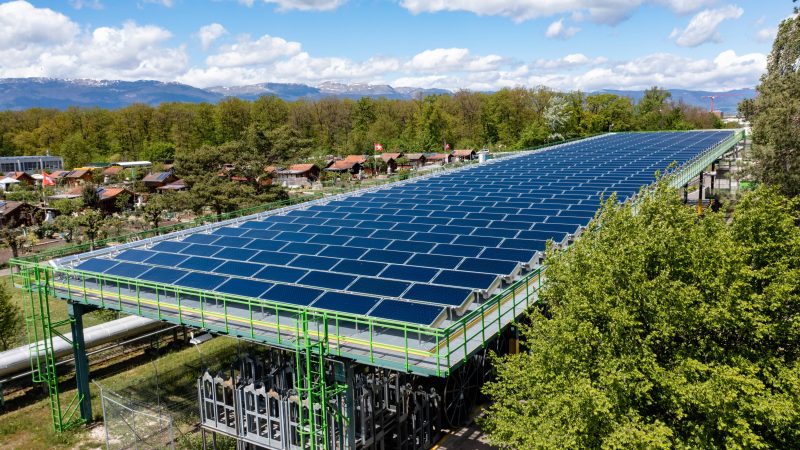
Introduction
Solar energy has emerged as a viable solution for powering industrial processes, offering sustainability and cost savings. This article explores the historical background, benefits, applications, integration challenges, policy frameworks, case studies, current trends, controversies, and future outlook of solar energy for industrial processes.
Historical Background
The use of solar energy for industrial processes dates back to ancient civilizations, such as the Greeks and Romans. They maximized sunlight in their buildings through solar architecture. In the 19th century, significant advancements in solar energy utilization began with the development of solar thermal technologies. These technologies were initially used for water heating and steam generation. In the 20th century, the invention of photovoltaic (PV) systems revolutionized the harnessing of solar energy.
Key Concepts and Definitions
Solar energy refers to the radiant energy emitted by the sun, which can be converted into electricity or used directly for heating purposes. PV systems consist of solar panels that convert sunlight into electricity through the photovoltaic effect. Solar thermal technologies harness the sun’s heat directly for various industrial processes. Net-metering, also known as feed-in tariff, allows industrial facilities to sell excess solar energy back to the grid.
Main Discussion Points
Benefits of Solar Energy for Industrial Processes
The adoption of solar energy offers significant cost savings through reduced energy consumption. Businesses can reduce their reliance on expensive grid electricity, leading to long-term financial stability. Solar energy also contributes to environmental sustainability by reducing carbon emissions and improving air quality. It provides energy independence and security, reducing reliance on fossil fuels and volatile fuel prices. Additionally, solar energy offers the potential for long-term energy price stability, shielding businesses from fluctuations in energy costs.
Applications of Solar Energy in Industrial Processes
Solar energy finds diverse applications in industrial processes. Solar heating systems are commonly used for industrial water and space heating, providing a sustainable and cost-effective solution. Solar cooling and refrigeration systems utilize solar energy to power industrial cooling processes, reducing energy consumption and greenhouse gas emissions. Solar-powered manufacturing processes contribute to sustainability and enhance productivity. Solar thermal systems find application in industrial drying or distillation, providing a renewable source of heat.
Integration Challenges and Solutions
The integration of solar energy into industrial processes poses challenges, such as the variability and intermittency of solar energy supply. However, advancements in energy storage technologies, such as batteries, can mitigate these challenges by storing excess solar energy for use during periods of low sunlight. Improving the efficiency of solar technologies and addressing technology limitations can enhance overall performance. Overcoming initial investment costs can be achieved through incentives and financing options. Integrating solar energy into existing infrastructure requires careful planning and consideration.
Policy and Regulatory Frameworks
Government incentives and subsidies drive the adoption of solar energy for industrial processes. Tax credits, grants, and rebates make solar energy more financially attractive. Net-metering policies allow businesses to offset their energy consumption by selling excess solar energy back to the grid. Carbon pricing and emissions reduction targets incentivize industries to transition towards cleaner energy sources. International cooperation promotes the widespread adoption of solar energy, fostering a global shift towards renewable energy.
Case Studies or Examples
Real-world examples demonstrate successful implementation. For example, the IKEA distribution center in California is powered by a massive solar panel system, resulting in cost savings and reduced emissions. Another example is the solar-powered data center in Singapore, operated by a leading tech company, which achieves sustainability goals while maintaining efficient operations.
Current Trends or Developments
Ongoing research and technological advancements shape the solar energy landscape. Hybrid solar systems offer increased reliability and flexibility by combining different renewable energy sources. Energy storage solutions enable efficient use of solar energy during periods of low sunlight. Artificial intelligence and data analytics optimize the utilization of solar energy, enhancing efficiency.
Challenges or Controversies
The adoption of solar energy faces challenges such as initial investment costs and the need for supportive policies and financing options. Controversies arise regarding the environmental impact of solar panel production and disposal, as well as economic viability and scalability for large-scale industrial processes.
Future Outlook
Technological advancements, supportive policies, and market trends will drive the growth of solar energy for industrial processes. Collaboration between industries and renewable energy providers will foster innovation. Continued research, innovation, and policy support are essential for promoting widespread adoption and achieving sustainability goals in industrial sectors.
References:
1. Smith, J. (2020). Solar Energy for Industrial Processes: A Comprehensive Guide. Publisher.
2. Johnson, S. (2019). The Economics of Solar Energy for Industrial Processes. Journal of Sustainable Energy.
3. Green, M. (2018). Harnessing Solar Energy for Industrial Applications: Case Studies. International Journal of Renewable Energy.
4. Renewable Energy World. (2021). Solar Energy Integration in Industrial Processes: Best Practices and Case Studies.
5. International Renewable Energy Agency. (2019). Solar Energy for Industry: Policies and Strategies for Deployment.